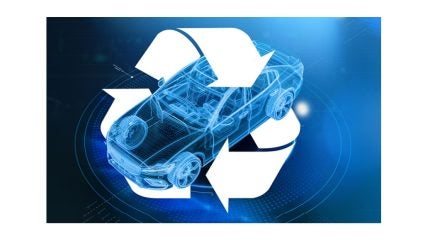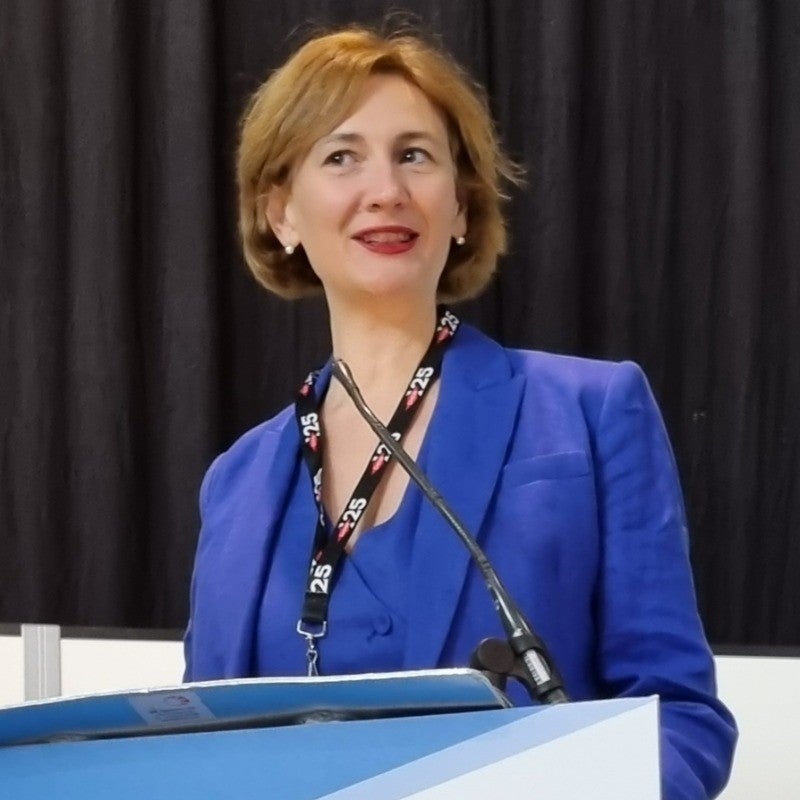
As momentum builds in Europe for higher levels of recycled materials in new vehicles, we hear from Dr. Esther Quintanilla, Global Mobility Marketing Director for Dow Polyurethanes, on a new process being developed by Dow and Gruppo Fiori.
Dow and Gruppo Fiori have jointly developed what they describe as a new breakthrough innovation which enables the recovery of polyurethane foam from end-of-life vehicles without complex disassembly. The recovered materials can be converted into new polyols, helping OEMs meet tightening sustainability goals and regulatory requirements.

Discover B2B Marketing That Performs
Combine business intelligence and editorial excellence to reach engaged professionals across 36 leading media platforms.
What is Dow and Gruppo Fiori’s new innovation? How will it impact recycling in practice?
Valued for comfort, safety and fuel-efficiency, polyurethane (PU) foam is used in diverse automotive applications from vehicle interiors and seating to acoustics and battery applications. Because it’s such a widely used material, it’s a great candidate for extraction from end-of-life (EOL) vehicles and can make a big impact for the industry. However, current state-of-the-art technology that deals with EOL vehicles is solely optimized to recover metals and certain plastic fractions.
This means recovering PU waste specifically from EOL vehicles is costly and complex – requiring the manual disassembly of those components in the dismantling phase. For example, recycling PU foam in automotive seating currently requires disassembling of the seat from the car before the shredding process.
Dow and Gruppo Fiori are reimagining this process by enabling PU foam to be recovered directly from shredded vehicle components, eliminating the need for prior disassembly while still maintaining the high purity required for effective chemical recycling.
Specifically, we’re talking about depolymerization – the only closed-loop recycling technology that helps turn PU foam back into raw materials with recycled content for new automotive applications.
This process directly addresses some of the concerns around cost and complexity of disassembly, making PU foam recovery more efficient. It also enables large-scale depolymerization, providing greater access to high-quality recycled materials – a priority worldwide, especially in Europe with its advancing regulations.
Who performs the recycling—OEMs, suppliers, or specialist recyclers? How does this innovation get designed into original products—by suppliers or OEMs?
There are many different recycling technologies and approaches – but we know that scaling solutions for circularity requires access to a reliable PU waste stream from EOL vehicles. We are interested in bringing together every touchpoint in the value chain to make that possible, hence this collaboration with Gruppo Fiori.
Gruppo Fiori is an Italian company leading the way in the ferrous and non-ferrous scrap recycling sector in Europe. So, for this collaboration, Gruppo Fiori is the party responsible for the recovery of PU foam materials from EOL vehicles. Then, those recovered materials can be processed through Dow’s depolymerization technology to be chemically broken down into polyol building blocks for new polyurethanes made with recycled content. Then, we bring players from across the value chain – foamers, converters, component manufacturers, Tier 1 suppliers, and OEMs – to the table to design for recyclability and co-create innovative solutions that unlock new levels of circularity for the entire industry.
How does this impact OEM sustainability goals?
A typical car contains a significant amount of PU foam – around 28 kg – meaning the material has the potential to make a large impact on overall vehicle sustainability if it were to be more circular. Our collaboration with Gruppo Fiori ultimately helps to accelerate and scale OEMs’ use of recycled content in new vehicles. Therefore, it has the potential to support OEM circularity goals by keeping valuable materials in use, reducing dependence on virgin raw materials and reducing waste. Beyond helping OEMs advance their own sustainability goals, this innovation also has the potential to help them comply with increasingly stringent regulations like that of the End-of-Life Vehicle Regulations (ELVR) in Europe.
In the long-term, how is circular recycling impacted?
Our latest technical breakthroughs signify significant progress in a short timeframe, providing positive momentum for future industrial implementation – our test-and-learn approach with Gruppo Fiori accelerated our innovation timeframe and can be a model for continuing to advance circular ecosystems.
We’re working to restore the value of waste and share that value with the industry, so that in the long-term, OEM and component manufacturers can enjoy the benefits they already appreciate from PU foam, but with additional circularity benefits.

Dr. Esther Quintanilla
Dr. Esther Quintanilla, Global Mobility Marketing Director for Dow Polyurethanes and Corporate Marketing Fellow, leads the identification of global business strategies for the Polyurethanes division of Dow MobilityScience™. In this role, she builds a competitive advantage and applies proven open innovation and knowledge-sharing methods to translate market opportunities into business for Dow inspired by sustainability. Joining Team Dow in 2007, Esther held several positions supporting Dow Polyurethanes and Dow Automotive prior to moving from the technical to the commercial organization within the company. She was recognized with the Dow Pinnacle Award for Best Marketing Business Excellence in 2016 and 2021.






